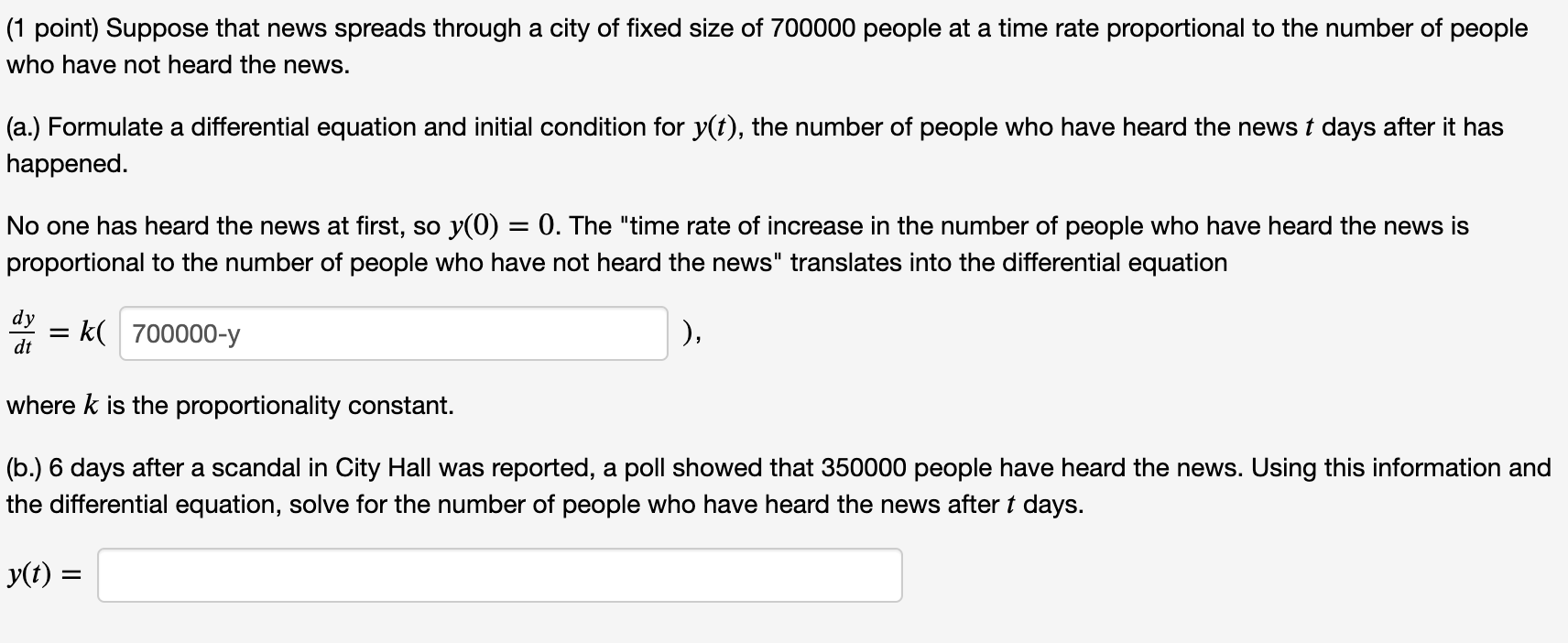Differential equations
(1 point) Suppose that news spreads through a city of fixed size of 700000 people at a time rate proportional to the number of people who have not heard the news. (a.) Formulate a differential equation and initial condition for y(t), the number of people who have heard the news 1' days after it has happened. No one has heard the news at first, so y(0) = 0. The "time rate of increase in the number of people who have heard the news is proportional to the number of people who have not heard the news" translates into the differential equation dy E = k( 7ooooo-y ). where k is the proportionality constant. (b.) 6 days after a scandal in City Hall was reported, a poll showed that 350000 people have heard the news. Using this information and the differential equation, solve for the number of people who have heard the news after t days. y(t) = (1 point) A body of mass 6 kg is projected vertically upward with an initial velocity 66 meters per second. The gravitational constant is g = 9.8mls2 . The air resistance is equal to klvl where k is a constant. Find a formula for the velocity at any time ( in terms of k): 00') = Find the limit of this velocity for a fixed time to as the air resistance coefficient k goes to 0. (Write to as to in your answer.) \"(10) = How does this compare with the solution to the equation for velocity when there is no air resistance? This illustrates an important fact, related to the fundamental theorem of ODE and called 'continuous dependence' on parameters and initial conditions. What this means is that, for a fixed time, changing the initial conditions slightly, or changing the parameters slightly, only slightly changes the value at time t. The fact that the terminal time 1' under consideration is a fixed, finite number is important. If you consider 'infinite' t, or the 'final' result you may get very different answers. Consider for example a solution to y' = y, whose initial condition is essentially zero, but which might vary a bit positive or negative. If the initial condition is positive the "final" result is plus infinity, but if the initial condition is negative the final condition is negative infinity








